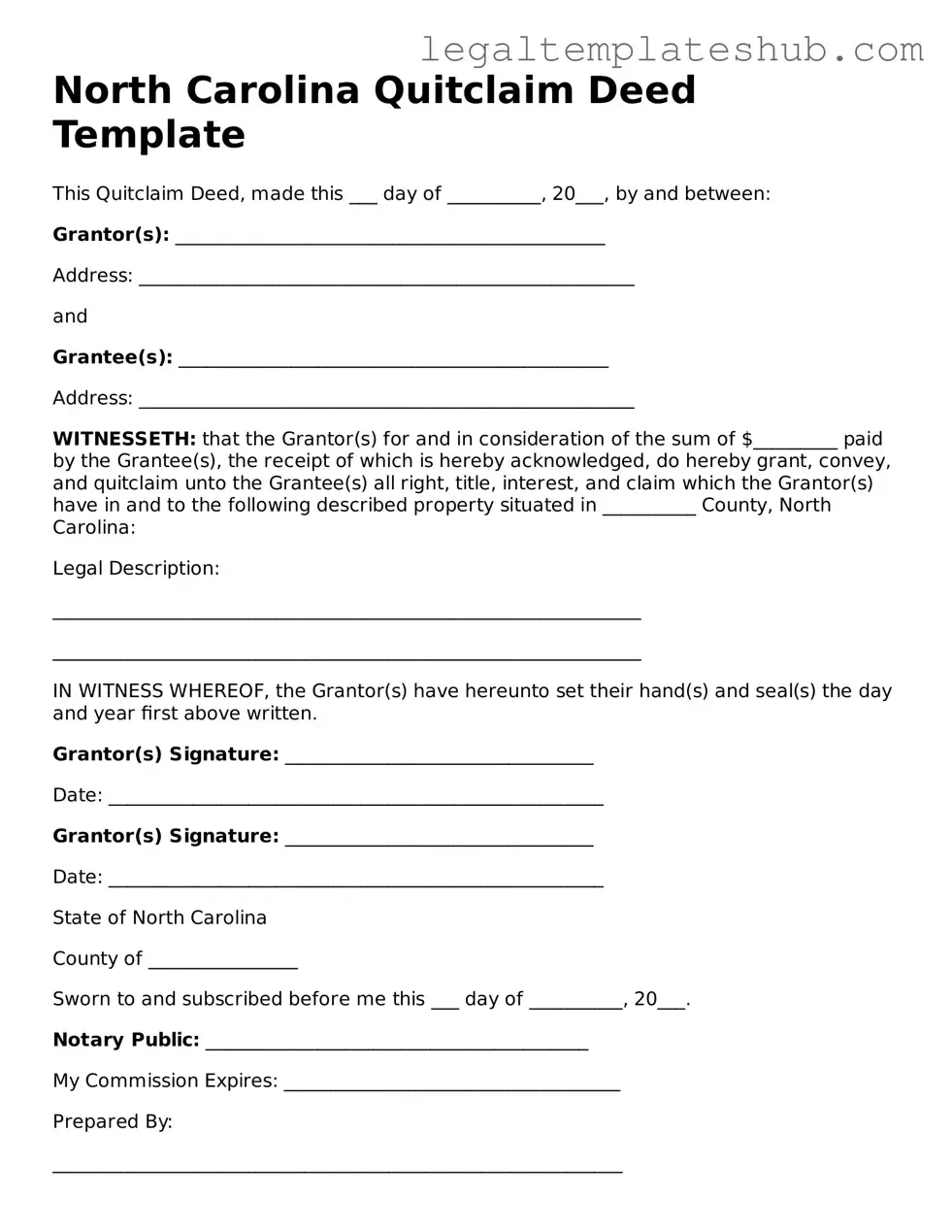Instructions on Filling in North Carolina Quitclaim Deed
After obtaining the North Carolina Quitclaim Deed form, it’s time to fill it out accurately. This form transfers property rights from one party to another. Ensure you have all necessary information on hand before you begin.
- Gather Information: Collect details about the property, including the legal description, current owner’s name, and the recipient's name.
- Fill in the Grantor's Information: Write the name of the person transferring the property (the grantor). Include their address.
- Fill in the Grantee's Information: Enter the name of the person receiving the property (the grantee). Provide their address as well.
- Describe the Property: Include a complete legal description of the property. This may involve referencing a previous deed or survey.
- Sign the Form: The grantor must sign the deed in the presence of a notary public. Make sure the signature is clear.
- Notarization: The notary will complete their section, confirming the identity of the grantor and witnessing the signature.
- File the Deed: Submit the completed deed to the county register of deeds office where the property is located. There may be a filing fee.
Once the form is filled out and submitted, it will be recorded by the county. This step is crucial as it makes the transfer official and protects the rights of the new owner.
